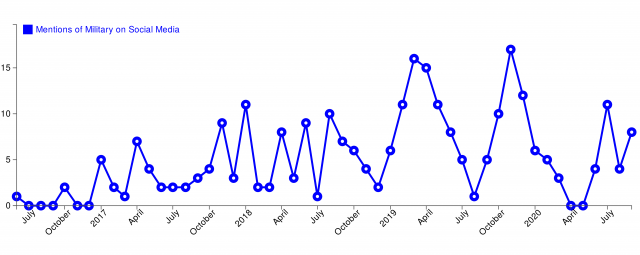A key function of the legislative liaison is to keep agency leadership informed and prepared for any and all engagements with Congress. In interactions ranging from an unexpected meeting to testifying before Congress, it’s critical that the legislative liaison has the information the agency official needs at any given time. Given that the conversations in each of these types of engagements can be vastly different, the information and format that information should be delivered in shouldn’t be the same in each scenario.
…When They Are Testifying Before a Committee
Understandably, the most in-depth briefing for a member happens before they testify before a committee. A key to success for briefing your agency leadership before a committee hearing is understanding the relationship with each committee member overall and specifically on the subject of the hearing.
To do this, you first need a meeting tracking system so that the data on your past engagements with members of Congress is well-cataloged in a way that makes it easier to take action when a hearing is scheduled.
In addition to studying the content a particular legislator may ask about, you also need to understand and prepare for their questioning style in hearings. Use a library of hearing videos to study a member’s style and use those videos in prep meetings with agency leadership.
….When They Are Meeting a New Member of Congress
When preparing for a meeting with a new member of Congress, you need to rely on biographical information and a legislator’s primary source documents to infer what topics they’ll be most interested in discussing with your agency. Rather than voting history and legislative initiatives, your brief should include the following:
First, include social media posts and primary source documents that highlight the public statements an elected official has made about your agency and the issues you care about. A tweet is a maximum of 280 characters, so these provide concise snippets of information for an agency official to learn from.
Second, include biographical information on the member. In addition to the usual biographical details that directly impact your portfolio (like past military experience for military officials), additional details like a legislator’s spouse’s name or how many kids they have can make it easier to personalize the conversation and show that you care about the member beyond their legislative portfolio.

In Quorum’s Download Center, you can drag and drop different elements to add exactly what information your leadership needs for a given legislative engagement.
Finally, include district-specific statistics or infographics about your organization. A new legislator is taking in lots of new information from lobbyists across many industries, but you’ll stand out if you can draw a direct connection to how your work impacts their constituents. Try including a map of the district that shows each of your agency’s offices in that district.

Quorum’s custom data functionality allows you to map your organization’s data to a legislator’s state or district.
…When They Are Meeting with a Key Member on Your Issue Area
When meeting with a member who is a known key stakeholder on your issue, you brief with the same one- to two-page memo, but don’t need to spend as much time giving an overview of the member’s background. Instead, narrow your information into that member’s activity on the issue and trends for Congress at large in order to properly map that stakeholder’s interest and influence.
Consider including:
- The number of bills on your issue that the member has introduced and enacted
- The volume of public statements that the member has made on the issue
- A trendline that shows when the member’s dialogue on the issue peaked

This is an example of a trend graph you could include showing Sen. Hassan’s dialogue mentioning the military over time.
You’ll also want to include statistics for the House or Senate at-large to serve as a point of reference for the member you are meeting with. Include details such as:
- The total number of bills introduced and enacted on the issue
- The most active members overall on that issue, to serve as a benchmark comparison for the member you are meeting with
- A trendline on the volume of bills introduced over time
- A trendline on the volume of dialogue on the issue over time
These metrics will help provide intel on what kind of stakeholder this legislator will be on this issue—are they a high interest and high influence stakeholder, where they both care deeply about the issue and have the ability to sway legislation? Or maybe they are a high interest but low influence stakeholder who cares deeply about the issue, but is unlikely to individually move the needle legislatively. While it’s important to engage with all kinds of issue stakeholders, the goals for each kind should be different.
…When You Have a Surprise Meeting
Have your information available on the go so that you can quickly brief the official taking the meeting with a legislator. You never know what could come up, so you want to be prepared to answer any questions from the official, even if the only time you have to brief is on the walk through the Capitol hallways.
With Quorum, all the data you find on your desktop or in downloadable PDFs is also on mobile, so you’ll never be caught without the answer from leadership on a member’s most recent statement about your agency or the status of a particular bill.


